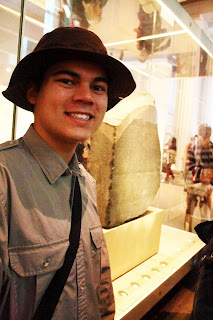As promised, I am back with a sequel to the last
piece about the story of money. I
mentioned that the main features of money are durability, divisibility, and
wide acceptance as having value. I also
mentioned that these have not always been the case and that there is at least
one notable exception that comes to mind, in the area of divisibility. But this story in turn will take us to the
more valuable insight about the nature of money in modern times, the concept of
fiat money.
 |
| "I'll need some help with getting this to the grocery store." |
On one fateful voyage, a
very large and accordingly valuable stone was lost to the sea. But as the inhabitants had grown accustomed
to dealing in paper that represented stones, and the representative paper was
still in existence, the populace agreed that the stone was out there somewhere
and that its document was still valid money.
Thus fiat money was born for the island of Yap.
“Fiat” is the Latin
word for “it shall be” or “let it be done” and fiat money is money whose value
is not derived from an underlying asset like gold, silver, or stone. Rather its legitimacy comes entirely from the
faith of the people who use it and, more often that not, the government that
decrees it as the legitimate currency of the land.
In modern times, the
rise of Bitcoins has been an endlessly fascinating form of currency because it
is backed by no government at all. I
recommend reading up on it because it is much too involved to deal with
sufficiently here. Yet even though there
is no ruling authority that mandates it as having value, the faith and trust of
those who deal in it online has elevated it to the status of money that is
widely accepted in many stores (mostly online) across the globe. But what makes it even more spectacular is
the fact that it does not even have a physical presence. In truth, it is the most fiat of money of
all.



0 comments:
Post a Comment